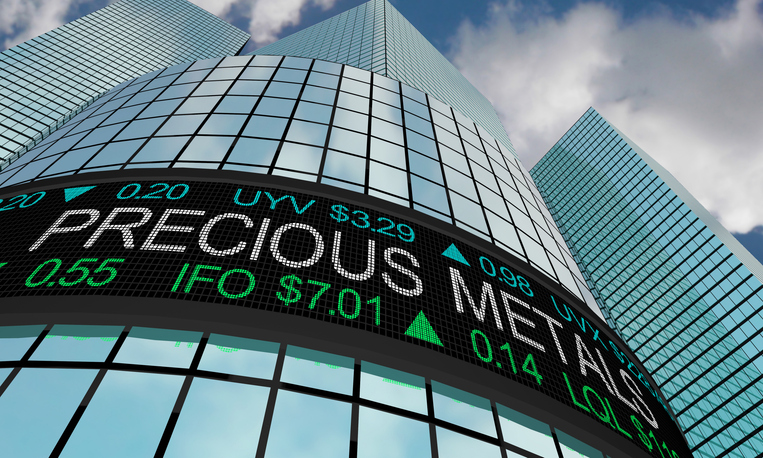In recent years, economic uncertainty, rising inflation and concerns about currency devaluation have renewed investor interest in gold. While the pandemic-era recession initially spurred demand, that interest has continued to grow as global markets remain volatile and inflationary pressures persist. Before you add gold to your portfolio, it’s a good idea to know exactly why gold is valuable. A financial advisor can also help you decide if gold or other precious metals have a strategic place in your portfolio.
The Current Basis for Gold’s Value
Inflation is a core reason many investors turn to gold. Think of it like an online auction: The more bidders competing for a single item, the higher its price climbs. Similarly, as more money chases the same goods and services, their prices rise — decreasing the value of each dollar. In essence, money is only as valuable as what we’re willing to trade it for.
This dynamic is often worsened by expansive monetary policy. In periods of economic downturn, particularly during recessions, central banks may lower interest rates and increase the money supply to stimulate growth. While this creates easy access to capital, it also raises the risk of inflation.
When inflation occurs during a recession, the result is stagflation — a rare but damaging combination of stagnant growth, rising unemployment, and diminished purchasing power. In these scenarios, the average person feels the impact more acutely, which is why inflation is a major component of the Misery Index, an economic measure that reflects how difficult financial conditions are for everyday individuals.
Inflation can be thought of as a tax on cash. As the purchasing power of money erodes, holding large cash reserves becomes less appealing. Many investors look for alternative stores of value, such as stocks or bonds. However, in times of aggressive monetary stimulus, traditional securities may become overvalued, making them less attractive as inflation hedges.
In contrast, gold offers a compelling alternative. It’s a tangible asset with a long history of maintaining value during inflationary and uncertain periods. When reasonably priced securities are hard to find and inflation pressures persist, gold can serve as a rational, strategic hedge in a diversified portfolio.
The Historical Basis for Gold’s Value
Gold’s value is deeply rooted in its long history as a form of currency. For centuries, civilizations minted coins from gold, using it as the foundation of trade and economic stability. Even after the shift to paper money, most Western governments continued to tie their currencies to gold well into the mid-20th century.
Gold’s enduring role as money wasn’t accidental. It had a unique combination of physical and economic traits that made it a practical, durable and reliable store of value:
- Malleability: Gold is soft and has a relatively low melting point, making it easy to shape into coins and bars. It could also be mined using pre-industrial tools, giving early societies access to the metal.
- Portability: Compared to heavier metals like iron, gold is relatively light and easy to transport, a key trait for currency.
- Stability and Safety: As a noble metal, gold doesn’t easily react with other elements. It’s chemically stable, non-toxic, and safe to handle.
- Resistance to Tarnishing: Gold doesn’t corrode or degrade over time. Once minted, a gold coin remains intact and recognizable indefinitely.
- Practical Rarity: Gold is rare enough to be valuable but not so rare that it’s impractical for widespread use as money.
Interestingly, almost no other element on the periodic table checks all of these boxes. Even silver, the next most common monetary metal, corrodes over time. This makes gold uniquely well-suited for long-term use as currency.
Gold’s Economic Role: Limited Use, Unlimited Trust
Gold’s value also came from what it wasn’t. A strong currency must have little or no use outside of being money. If a currency holds intrinsic value — like salt, which the Roman Empire once used — it distorts prices, making them sensitive to unrelated supply and demand forces. Gold had limited utility outside of jewelry and ornamentation, which helped stabilize its value and made it an ideal basis for a monetary system.
However, the Industrial Revolution in the 19th century began to shift this dynamic. As economies started to grow at unprecedented rates, the global supply of gold couldn’t keep up. Miners simply couldn’t extract enough gold fast enough to match economic expansion. Over time, this scarcity contributed to governments gradually moving away from the gold standard, ushering in the era of fiat currency.
Two Problems With Gold As Money

While gold served as a cornerstone of currency for centuries, it presents two major challenges when used as the basis for an economy — challenges that are still relevant today.
1. Gold Limits Monetary Flexibility
One of the biggest drawbacks of a gold-based economy is the government’s inability to manage the money supply in response to economic conditions.
A historical example is Spain in the 16th and 17th centuries. After colonizing much of South and Central America, Spain flooded its domestic market with gold from the New World. The sudden surge in supply triggered runaway inflation, destabilizing the economy.
This happened because prices are partially dictated by how much currency is in circulation. When the money supply grows faster than the production of goods and services, inflation occurs. If consumers have more money but there’s nothing new to spend it on, they begin bidding up prices for existing goods, and causing inflation to spiral.
Under a gold standard, governments have limited ability to regulate this dynamic. They can’t quickly increase or reduce the money supply to stabilize prices or promote growth.
2. Gold Can Lead to Deflation
The second issue with gold is that it can cause deflation, a sustained drop in prices that can harm economic activity.
Consider how the U.S. targets GDP growth of about 2–3% annually. This means the economy is expected to produce slightly more goods and services each year. If the money supply remains fixed — like it would under a gold standard — prices would fall as more goods chase the same amount of currency.
For example:
- If 100 loaves of bread cost $100 total, each loaf costs $1.
- If production increases to 102 loaves and the money supply stays at $100, the price drops to roughly $0.98.
- As production rises year after year, prices fall further.
In this environment, consumers may delay purchases, expecting prices to drop over time. This behavior reduces demand, forcing businesses to cut prices, lay off workers, and scale back operations, slowing the economy overall.
This deflationary pressure is hard to correct under a gold-backed system because governments can’t easily increase the money supply. They are constrained by how much gold they can mine or acquire, which isn’t always aligned with economic growth.
Deflation also fuels uncertainty and hoarding. When consumers fear falling prices — or a deeper economic downturn — they’re more likely to hold onto their money, which further suppresses spending and growth.
Bottom Line

Gold, which can be owned in a mutual fund or IRA, has been the basis of money for thousands of years because its specific chemical properties and level of rarity have deemed it valuable in a practical way. Recent gains in the price of gold stem from people’s use of it as a store of value when the economy looks shaky or vulnerable to disruption, or when people fear that paper currency will lose its value and alternatives are unavailable.
Tips for Investing
- Gold is one of the most popular investments on the market, both for institutions and individual investors. A financial advisor can help you determine if owning gold would be a good strategy for your portfolio. Finding the right financial advisor doesn’t have to be hard. SmartAsset’s free tool matches you with up to three vetted financial advisors who serve your area, and you can interview your advisor matches at no cost to decide which one is right for you. If you’re ready to find an advisor who can help you achieve your financial goals, get started now.
- Knowing what it means to have a “strong” currency vs. a “weak” one, and why that matters, can help you improve your personal finances. An easy-to-use currency calculator can tell you how much the dollar is worth, which can also help you know how to handle your money.
Photo credit: ©iStock.com/Petrovich9, ©iStock.com/iQoncept, ©iStock.com/alfexe
